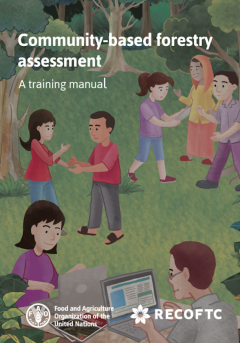Focal point
Location
The Food and Agriculture Organization of the United Nations leads international efforts to defeat hunger. Serving both developed and developing countries, FAO acts as a neutral forum where all nations meet as equals to negotiate agreements and debate policy. FAO is also a source of knowledge and information. We help developing countries and countries in transition modernize and improve agriculture, forestry and fisheries practices and ensure good nutrition for all. Since our founding in 1945, we have focused special attention on developing rural areas, home to 70 percent of the world's poor and hungry people.
Members:
Resources
Displaying 36 - 40 of 5074Strengthening civic spaces in spatial planning processes. A technical guide on regulated spatial planning and tenure to balance societal priorities in the use of land, fisheries and forests
Decisions over tenure – who gets access to land, fisheries and forests, for how long, and under what conditions – have important implications for people’s livelihoods. Spatial planning procedures can have a considerable impact on the legitimate tenure rights of the respective rights holders and, in the long term, can affect livelihoods. This technical guide on regulated spatial planning and tenure acknowledges this link and provides guidance on the importance of recognizing legitimate tenure rights in spatial planning processes.
State of Agricultural Commodity Markets 2020. Agricultural markets and sustainable development: Global value chains, smallholder farmers and digital innovations
The State of Agricultural Commodity Markets presents commodity market issues in an objective and accessible way to policy-makers, commodity market observers and stakeholders interested in agricultural commodity market developments and their impacts on countries at different levels of economic development.
Legislative approaches to sustainable agriculture and natural resources governance
Influenced by international trends, as well as in response to population, climate, resource and development needs, the standards, norms, mechanisms and incentives in natural resources law at the national level have evolved in recent years. Natural resources laws are influenced by developments in the international arena, either through international treaties that are binding or through ‘soft law’ instruments that are not legally binding but nevertheless have widespread adherence among governments, or that provide principles that guide and shape national legislation.
Global Forest Resources Assessment 2020
Did you know that forests cover nearly 1/3 of land globally?
That’s 4.06 billion hectares.
In other words, there is around 0.52 ha of forest for every person on the planet.
More than half (54 percent) of the world’s forests are in only five countries –the Russian Federation, Brazil, Canada, the United States of America and China.
Ninety-three percent of the forest area worldwide is composed of naturally regenerating forests and 7 percent is planted.
Community-based forestry assessment
In 2019, the Food and Agriculture Organization of the United Nations (FAO) published a framework to provide important insights into the successes and shortcomings of community-based forestry at the country level. A framework to assess the extent and effectiveness of community-based forestry also helps national governments determine and track the extent and effectiveness of the wide array of CBF initiatives.








